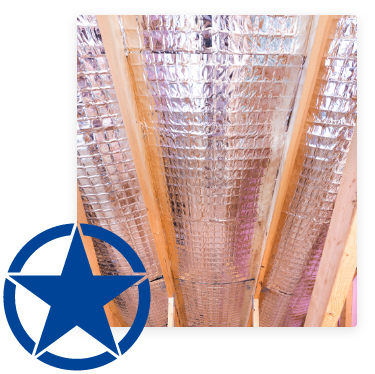Why Florida Homes Should Have Radiant Barrier Insulation
With an annual average of 230 days of sun, it’s like summer year-round in the Sunshine State. The solar heat beats down on your roof and permeates through the insulation into your living spaces.
Luckily, you can shield your home from the powerful Florida sun with radiant barrier insulation. Similar to space blankets worn by hikers, athletes, astronauts, surgeons, and others, radiant barriers use thermal-reflective material to keep heat out while also working to keep heat in.
How Do Radiant Barriers Work?
Heat travels from one place to the next by a combination of conduction, convection, and radiation.
Traditional insulation materials, such as fiberglass, help slow conductive heat flow (and some convective heat flow) but are powerless against radiant heat gain (infrared radiant energy).
That’s where radiant barriers and reflective insulation systems come in. When the sun’s radiant energy beats down on your home, the hot roof material begins to radiate heat energy into the attic. The radiant barrier helps reflect heat away from the attic and underside of the roof.
While radiant barriers are most effective against solar heat gain and downward heat flow, they can also help reduce heat loss in the winter by blocking radiant heat from escaping.
Radiant Barrier Materials
Radiant barriers use a highly reflective material, usually aluminum foil, on one or both sides of a variety of different backings, such as:
- Kraft paper
- Plastic films
- Polyethylene bubbles
- Cardboard
- Oriented strand board
Many radiant barriers are made of fiber-reinforced material to increase strength and durability.

